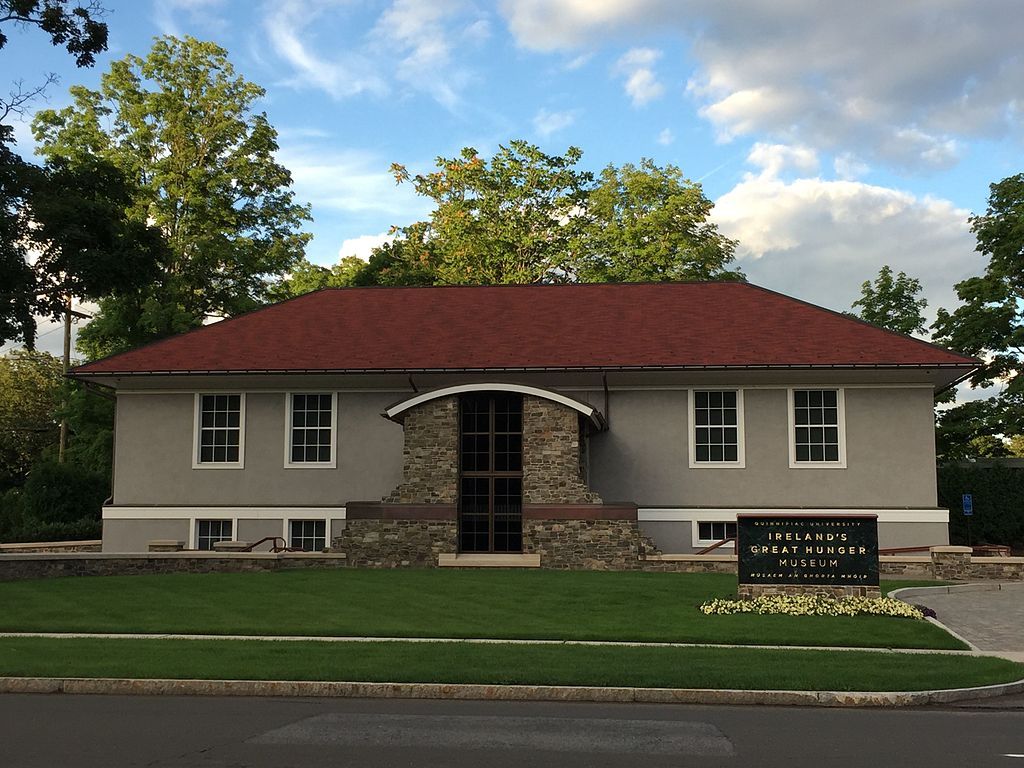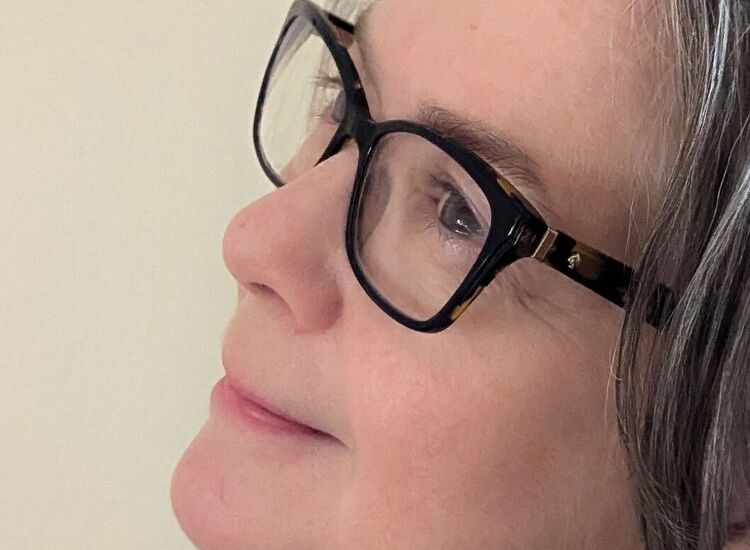The Great Hunger Museum at Quinnipiac University in Hamden, Connecticut, will not be reopening, the Echo understands.
But the museum and its collection might end up moving to a new location.
A permanent closure at Quinnipiac is not unexpected as the university pulled back on funding two years ago and stated that the museum would have to fund itself.
Such self-funding has been severely hampered by the Covid-19 pandemic which has resulted in the museum, according to an internet posting, being closed "temporarily."
The museum website further elaborates with "the museum is temporarily closed in support of community health efforts to slow the spread of Covid-19.
The Echo believes that temporarily has graduated to permanently.
However, a statement from Quinnipiac, through a spokesman, points to the possibility of a reopening at a new location.
The Statement reads: “Ireland’s Great Hunger Museum remains closed and the University is in active conversations with potential partners with the goal of placing the collection on display at an organization that will increase access to national and international audiences about Ireland’s Great Hunger.
"Ireland’s Great Hunger Institute remains open, and Quinnipiac University continues its research program on the Great Hunger through the institute as well as the Great Hunger collection housed in the Lender Special Collection Room of the Arnold Bernhard Library on the Mount Carmel Campus.”
It was reported back in 2019 that Quinnipiac was considering closure of the Great Hunger Museum which is housed adjoining its main Hamden campus.
The threat to the facility, which was opened with great fanfare in October, 2013, followed the retirement of Quinnipiac president Dr. John Lahey and the arrival of a new president and administrative team at the university which is nationally known for, among other things, its political polling.
A source at the time spoke of “rumors” of the museum’s closure.
Even rumors of closure were enough to cause widespread dismay in the Irish and Irish American community.
As previously reported in the Echo, Dr. Lahey’s dream of a museum was devoted to one of the most important historical events in Irish and Irish American history. The dream was made reality by a teaming up of Bronx native Lahey and a Jewish business magnate named Murray Lender, the world’s biggest bagel producer.
In 1987, when Lahey was appointed president of the small college of Quinnipiac outside New Haven, Murray Lender was among the school’s richest alumni.
But when the visionary new president met Lender to outline his plans for developing an outstanding educational institution and requested a gift, the bagel millionaire urged him to be the first person to tell the story of Ireland’s Great Hunger. That spurred the college president to delve deeper into story of the Great Hunger, a story that had often been brushed under the table down the years.
“Christine Kinealy’s groundbreaking book ‘This Great Calamity’ had come out in 1995 and it really sparked my intellectual awakening,” recalled Lahey. “I had always thought the Famine as a sad event linked to the failure of the potato crop but I got angry reading her book which really put the blame firmly with the government in London.”
That awakening was spurred on by the university’s largest donor.
“Murray said to me, ‘John, I will give you a gift but it has to go towards the idea of a Great Hunger museum. I have heard you talk about the impact it had on your people but I’m amazed that I had never heard more about it,’” Lahey remembered. “To my embarrassment now, I actually tried to talk him out of it. But he was insistent and in the summer of 1997 — the 150th anniversary of the Black ’47 — I went to Ireland to start putting together a special art collection which would tell the story of the Great Hunger.”
That same year, Lahey — who would go on to serve as the chairman of the Board of Directors of the St. Patrick’s Day Parade — was grand marshal of the New York parade. When he stepped out along Fifth Avenue, Murray Lender marched by his side. As grand marshal, Lahey travelled to meet Irish-American groups affiliated to the parade in the months leading up the March 17 celebration, bringing with him his message about the need to tell the full and true story of the Great Hunger.
“Around this time, the British ambassador to the U.S. attacked me for drawing attention to the Famine and said it shouldn’t be compared to the Holocaust, which I hadn’t suggested at any rate. But it does seem to be that it was certainly a cultural genocide,” Lahey told the Irish Echo.
“When I first went into the art galleries in Dublin, they were amazed at my request because no-one had sought out these works. Of course, the reality is that very few Irish artists painted Famine scenes,” Lahey said. “It wasn’t seen as ‘appropriate’ art and there was also a part of the Irish psyche which didn’t want to remember that time of great suffering and agony.”
In 2000, Quinnipiac opened a room to house An Gorta Mór Special Collection, exhibiting 25 works Lahey had bought from a series of art dealers across Ireland as well as new artworks he commissioned from some of Ireland’s top artists. In a short period, he had brought together the largest collection of Great Hunger art in the world.
However, Murray Lender wasn’t content to rest on his laurels when the Great Hunger room opened.
“He said to me, ‘John, let’s do more.’ I am sure I was the only person collecting art related to the Famine in the country,” added Lahey.
The Quinnipiac president commissioned new works from top Irish artists John Behan, Rowan Gillespie (sculptor of the Famine memorial in Dublin’s docklands) and Brian Maguire, who had completed major public artworks on the Great Hunger, and was also gifted a major forgotten piece by the widow of outspoken Irish artist Michael Farrell — one of a handful of Irish artists who had tackled the period.
“By 2010, we had over 100 pieces and Murray was insistent that we needed a museum to house them, explained Lahey. “We found a 19th-century building just off campus which we acquired and gutted to create the museum. I also met Niamh O’Sullivan in Dublin around this time and commissioned her to curate the collection. Niamh [a professor emeritus of visual culture at the National College of Arts and Design in Dublin] then designed the museum to accommodate the collection.”
Músaem an Ghorta Mhóir/The Museum of Ireland’s Great Hunger, opened in October, 2013. Murray Lender, whose drive had made the landmark institution possible didn’t get to savor the moment: he had passed away in March 2012. But at the opening, President Lahey paid tribute to his vision and generosity: “A lot of Irish and Irish American artists and supporters helped to make this day possible but without the son of a Jewish immigrant from Poland who saw parallels in our experience we wouldn’t be able to dedicate this new facility.”
After opening, the Museum of Ireland’s Great Hunger began building its collection and earning a reputation as a center of scholarship and art. In December 2014, the museum launched a digital database containing around 1,500 articles and illustrations relating to Ireland and the Great Famine.
“We mark the second anniversary of the opening this coming October in the knowledge that we have had over 20,000 visitors this year. The story of Ireland’s Great Hunger, the worst demographic catastrophe of the 19th century, is now being told accurately and with visual art which is more powerful and effective in telling this story of pain and suffering than the written word,” said Dr. Lahey at that time.








